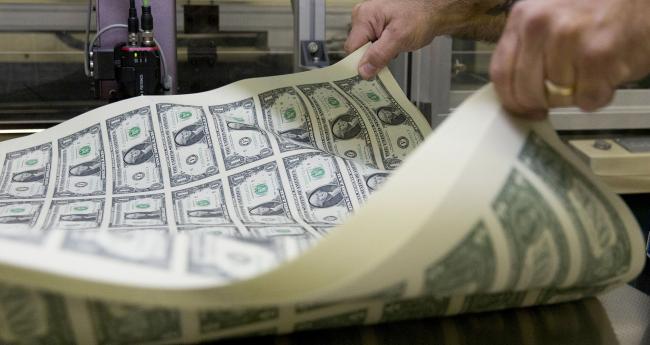(Bloomberg) -- Yield-starved investors outside the U.S. are abandoning their currency hedges on American assets, and that’s good news for dollar bulls.
After factoring in the price of a 3-month forward contract, the yield on benchmark 10-year Treasuries falls to about negative 0.6 percent for euro-based investors. It’s the same story for Japanese bond buyers: Benchmark U.S. debt yields around negative 0.4 percent. That compares with 2.53 percent for those purchasing the note without paying up for protection against currency swings.
Costly hedges have pushed the likes of Nippon Life Insurance Co. to boost its holdings of unhedged foreign bonds. The flip side of the phenomenon is that U.S.-based asset managers are steering clear of shorting the dollar.
Japan- and Europe-based companies and bond funds “throwing currency caution to the wind” is one critical factor behind the greenback’s recent “turbo bid,” according to the Canadian Imperial Bank of Commerce.
“Just put yourself in the shoes of an asset manager in either the Eurozone or Japan that has allocated capital to US assets,” Bipan Rai, North American head of foreign-exchange strategy at CIBC, wrote in a note Monday. “Ask what the incentive is to hedge FX risk given that it offsets your yield pickup.”
Expensive hedging dynamics are one of the reasons why Rai is shifting to be long the dollar on a tactical basis, he said in a follow-up email. The greenback has gained against most of its Group-of-10 peers in 2019, and the Bloomberg dollar index touched its highest level of 2019 last week.
Sticking Around
The dynamic could persist for years. Short-term interest rates -- which determine the price of currency futures contracts, or forwards -- are much higher in the U.S. than in Europe and Japan. For example, the three-month London interbank offered rate for dollars is almost 300 basis points above the comparable rate for euros. The difference has almost doubled in the past two years, raising the cost of shorting the greenback for American fund managers.
Forgoing hedging carries risk, Rai warns. Should the dollar falter, that could spur an exodus from U.S. assets and reignite long-dormant currency volatility, he wrote.
The more “under-hedged positions there are in the market, the more imbalances start to rise,” Rai wrote. “An adverse move against investors that are under-hedged means there’s a very good chance that assets are dumped and FX vols increase.”
